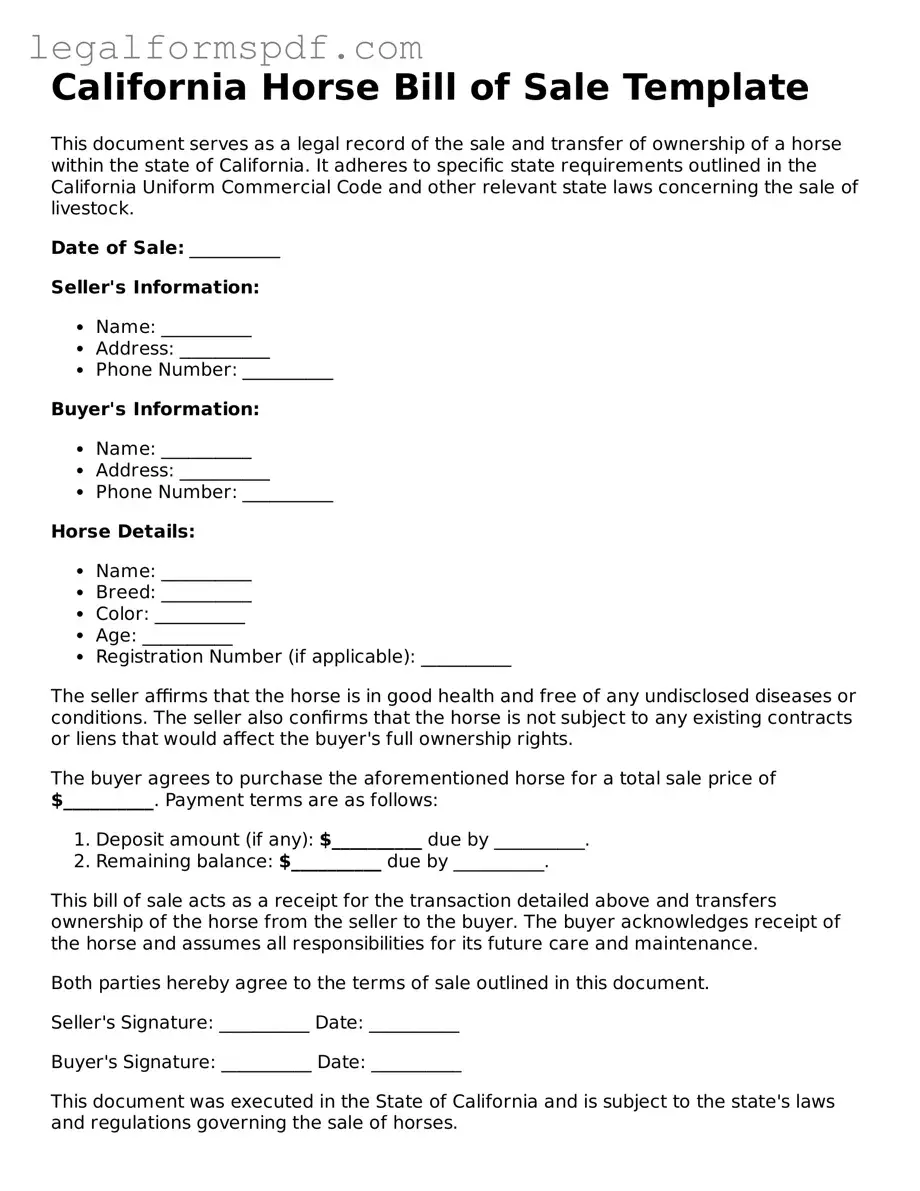What is a California Horse Bill of Sale?
A California Horse Bill of Sale is a legal document that records the sale or transfer of a horse within the state of California. It provides proof that the transaction took place, detailing the agreement between the buyer and the seller. Essential information such as the horse's description, sale price, and the parties' contact information are typically included.
Why is it important to use a Horse Bill of Sale in California?
Using a Horse Bill of Sale in California is important because it legally documents the transaction between the buyer and the seller. This documentation is crucial for both parties, serving as evidence of ownership transfer, which can be helpful in case of disputes, for tax purposes, or when proving ownership in future transactions.
What should be included in a California Horse Bill of Sale?
A comprehensive California Horse Bill of Sale should include the horse's name, breed, color, date of birth, registration details (if applicable), the sale date, the sale price, and warranty information. It should also have the names, addresses, and signatures of both the buyer and the seller. Clear terms and conditions of the sale are also vital to protect both parties.
Do I need to notarize my California Horse Bill of Sale?
While not required by law, notarizing your California Horse Bill of Sale adds an extra level of legal protection. A notarized document confirms the identity of the signatories, making the bill of sale even more credible and harder to dispute.
Can a California Horse Bill of Sale be used for registering the horse?
Yes, a California Horse Bill of Sale can be used as a part of the documentation required for registering the horse. However, it's important to check with the specific agency or organization handling the registration for any additional requirements or documents needed.
What happens if I lose my California Horse Bill of Sale?
If you lose your California Horse Bill of Sale, it's advisable to contact the other party involved in the transaction and request a copy. If both parties lack a copy, drafting a new document reflecting the original agreement and having it signed again by both parties could serve as a solution. Keeping a digital copy of the document can prevent future losses.
